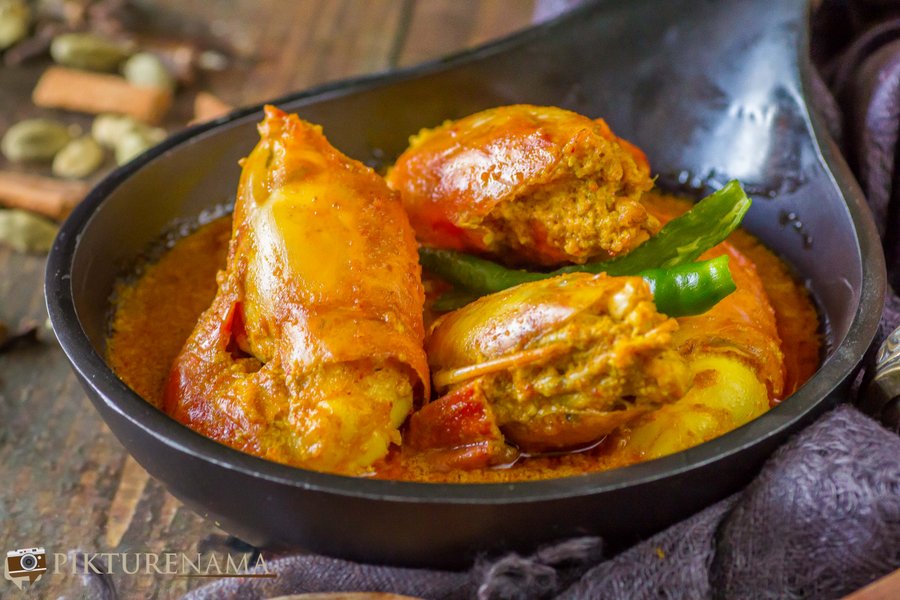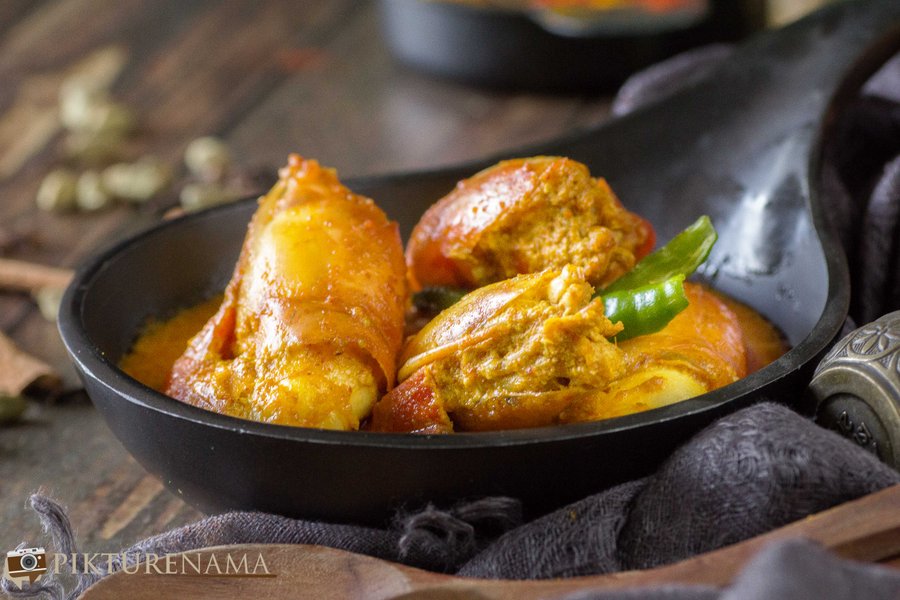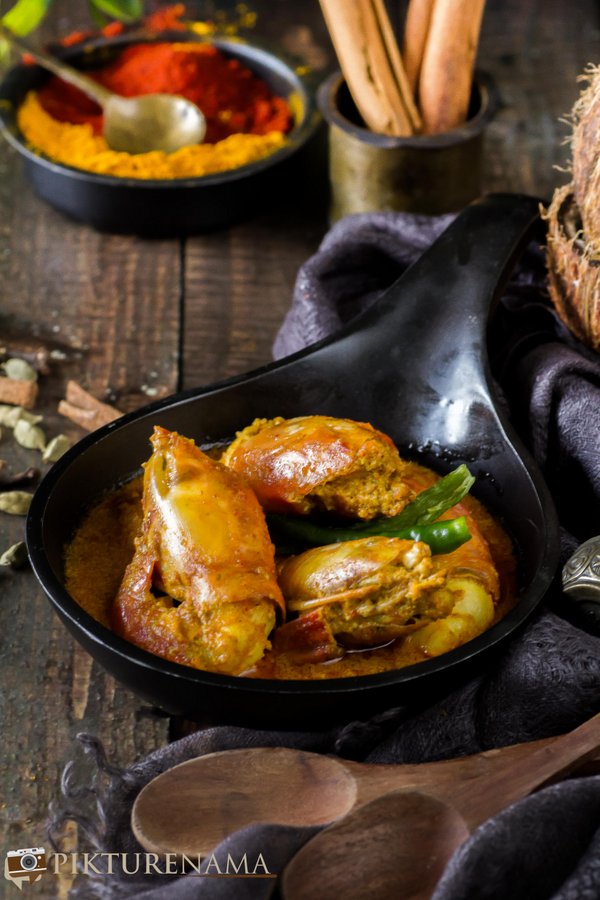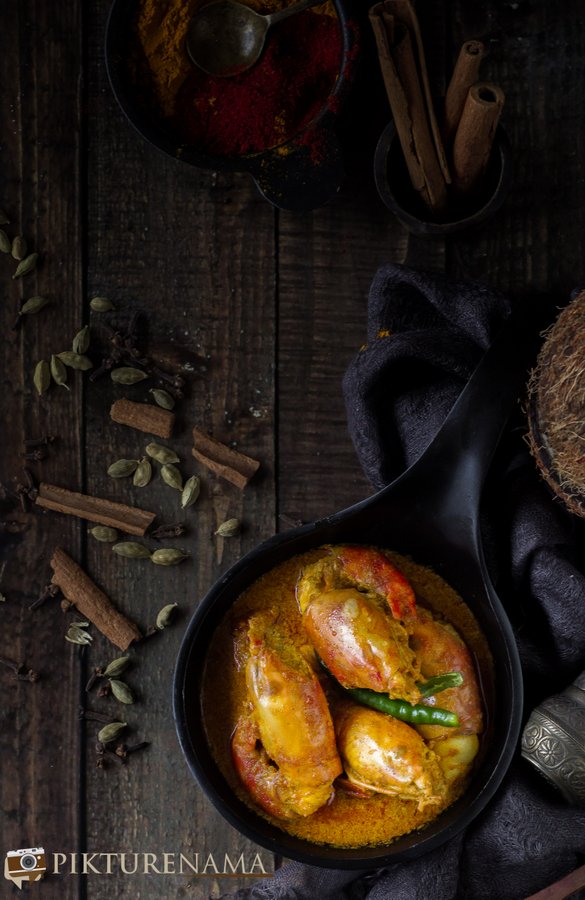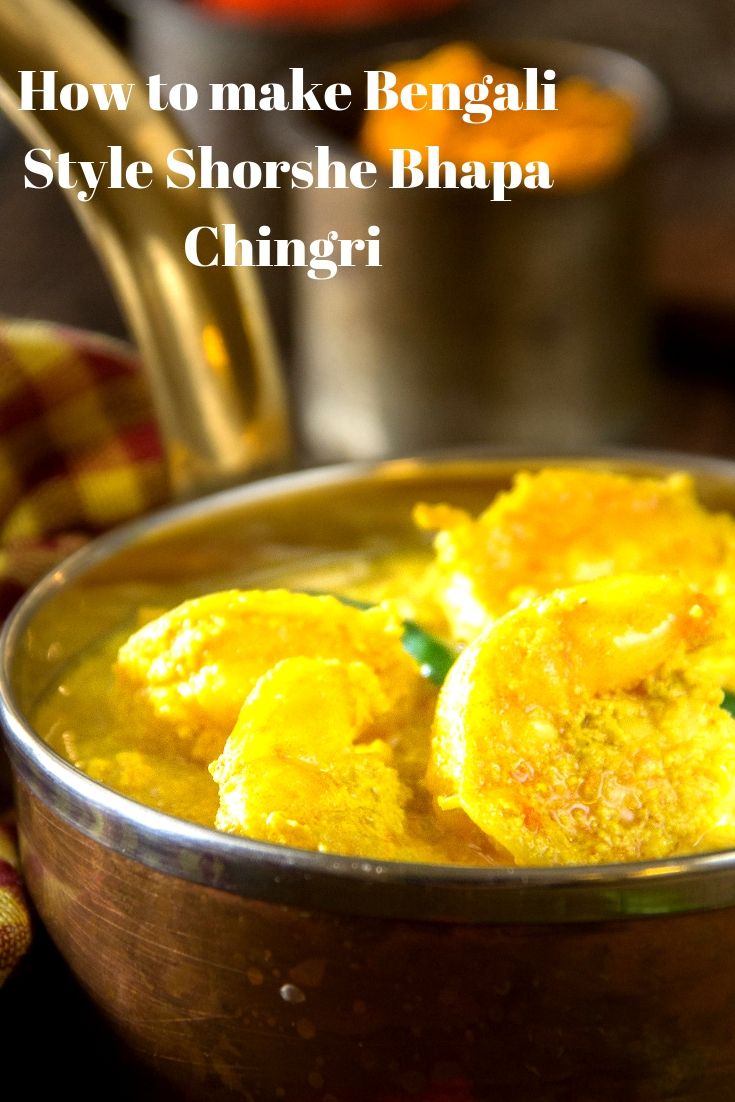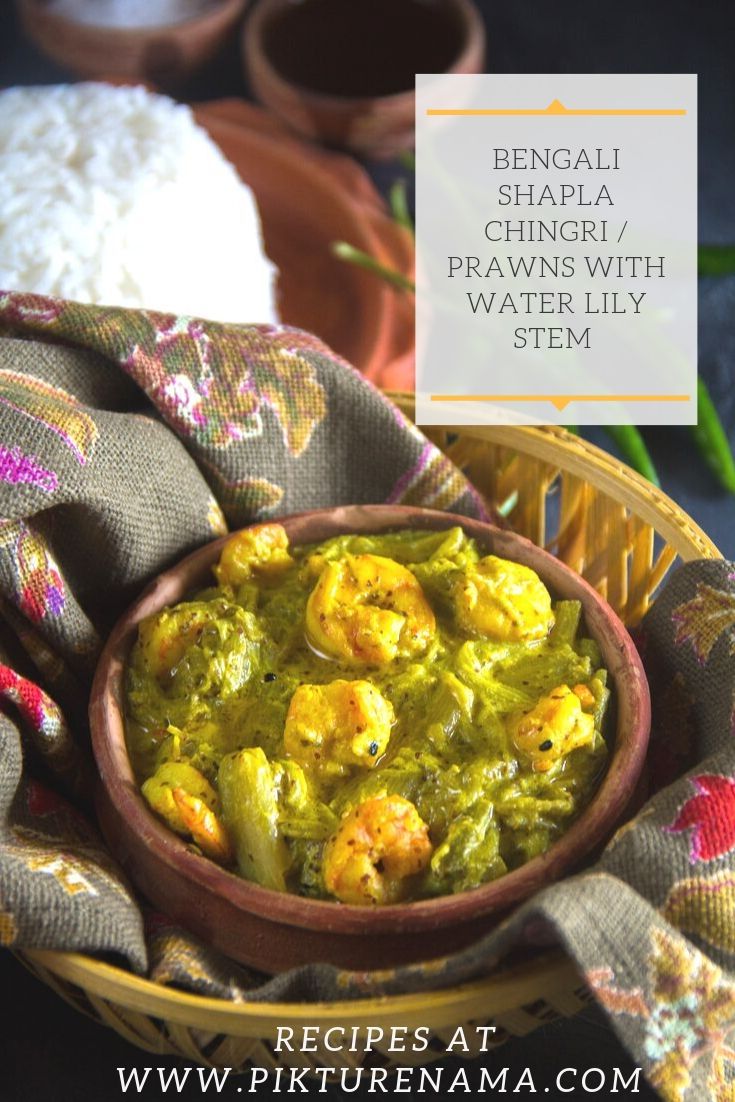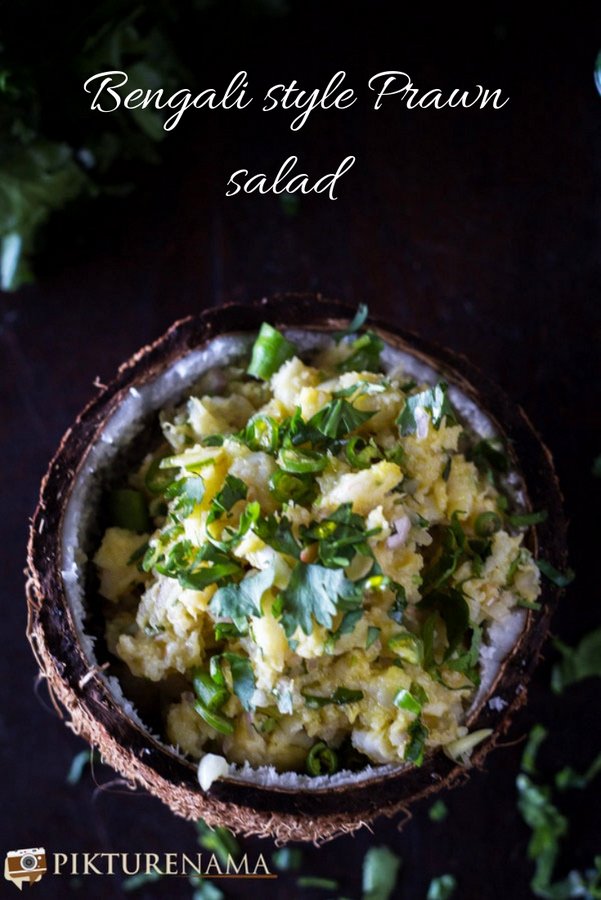Every time I make chingri malaikari at home, I remember this remark made by Mr. Vir Sanghvi during one of our conversation. ‘..but Bongs don’t own the malaikari’, he said. Up until then, I did not know the history of this prawn dish, which is a household name in Bengal.
Where did chingri malaikari come from?
Most people in the food world already know the story. However, it still comes as a surprise to many, like me, when someone says that this dish does not belong to us. The word malaikari is basically broken down to ‘malai’ and ‘curry’. And ‘malai’ has got nothing to do with cream (which many think could be the reason, because of the creamy texture). “Malai’ comes from ‘ Malay’ or Malaysia. No one can tell for certain, how the curry travelled from Malaysia to Bengal but there are several theories. It could have been traders and sailors from Malaysia who travelled to this part. Afterall, it was an influence and we adapted the curry as per our taste.
Whatever the reason, today, chingri malaikari is a loved dish of most Bengalis. It is almost a mandatory dish in a wedding or any other celebration. All Bengali restaurants have chingri malaikari in their menu.
Golda Chingri makes the best Chingri Malaikari
These are freshwater jumbo prawns, local to this part of the country. Unlike tiger prawns (locally known as bagda chingri), Golda chingri has a large head, sometimes as large as the body itself. The head is filled with deliciousness as you cook it and the flavour melts into the oil. The flesh of golda chingri is rather like a lobster, firm in texture and sweetish in taste. And when you cook it right, the flesh is buttery soft. Having said that, you can also make chingri malaikari with tiger prawns or any other large prawns.
Chingri Macher bati Chorchori is best cooked with medium white prawns or small prawns
Prepping the prawns
Cooking chingri malaikari is fairly simple as long as you treat the prawns with love and care. There aren’t too many spices going into it and it doesn’t take long as well. Cleaning the prawns and the giant sized heads is the tedious part. The prep actually takes away a lot of time, in case the fish monger doesn’t clean it as per the requirement. Keep the shell of the head and the tail on and remove the rest of the shell from the body. In several weddings, I have seen caterers cooking with the entire shell, with a skewer pierced through the length of the prawn to keep it straight. While that looks pretty and the chances of overcooking the prawn gets limited, personally I find it cumbersome to de shell and eat at a party.
Make a long slit on top of the body of the prawn and pull out the poop shute. There is also a poop bag at the base of the head, which needs to be cleaned. Then wash the prawns, pat them dry and sprinkle some salt, juice of one onion paste and turmeric powder and keep aside for fifteen minutes.
Kumro chingri is one of our favourite recipes with small prawns
Cooking chingri malaikari
Bengali cooking is best done in a kadai or a wok. You can do it in a frying pan as well. You need to use mustard oil to lightly fry the prawns in the beginning. This is the most important process. In real time, it is not even frying the prawns but only giving it colour on each side and takes about half a minute for each prawns. This also releases the flavours from the prawn head into the oil and the oil becomes frothy. But don’t be afraid. Continue cooking in the froth. It also needs to be handled delicately or else the head will break away from the body. Once the prawns are sautéed, drain them out and keep aside.
In the same oil, temper whole spices. Use dried bay leaf, one green chili and whole garam masala. Garam masala for Bengalis mean green cardamom, cinnamon and cloves. Then when the spices start releasing aroma, add the leftover onion paste (the juice was in the prawn marinade) and ginger paste. Start frying them till the raw smell goes off and then add Kashmiri red chili powder and cook the spices. Sprinkle some water so that the spices don’t stick to the bottom of the kadai. Finally add coconut milk, sugar and let it cook for sometime. Add the prawns in the end. Depending on the size of the prawns, they take between 5 – 6 minutes to cook. Finish chingri malaikari with ghee and powdered garam masala (again the Bengali garam masala) and slit green chilies. Chingri malaikari is best had with steamed rice.
Have you tried this terrific recipe of prawn pickle?
Here are some of our favourite chingri recipe . Try them out
For Professional Food Photography contact us
Here is an Instagram reel which we had made for making of Chingri Malaikari –
https://www.instagram.com/reel/Ci1h2y4jyd3/
Share your views / Follow us
Do try this recipe and share your feedback. You can reach out to us at our social media handles: Instagram, Facebook or any of our personal Facebook (Madhushree and Anindya) and twitter profiles. Post a picture and tag us.
Pin this for your recipe board ? You can follow us on Pikturenama recipes for more recipe ideas (Link)
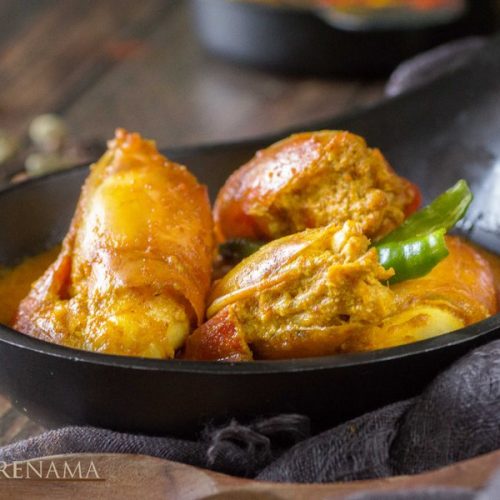
Chingri Malaikari I Prawn Malai Curry Bengali Style
Ingredients
- 6 nos galda chingri jumbo freshwater prawns with a large head. (see recipe notes)
- 1 tsp turmeric powder
- 1 no medium sized onion
- 1 no dried bay leaf
- 3 nos green cardamom
- 1/2 inch cinnamon stick
- 4 nos cloves
- 1 1/2 tsp ginger paste
- 1 tsp Kashmiri chili powder
- 1/4 tsp powdered Bengali garam masala
- 3 nos green chillies
- 1/2 tsp sugar
- 2 tbsp mustard oil
- 1 tsp ghee
- salt as per requirement
- 400 ml coconut milk
Instructions
- Clean and wash the prawns as described above. Sprinkle 1/2 tsp turmeric powder and salt. Make a paste of one oinion. Use the juice of that onion in the prawn marinade and keep the rest for later use. They need to be in the marinade for 10 - 15 minutes.
- In a kadai, heat the mustard oil and slowly slide the prawns one by one or two at a time. The prawns need to be cooked for half a minute. Once both sides have a little bit of colour, take them out and keep aside.
- In the same oil, temper the following spices- dried bay leaf, one slit green chilli, whole cardamon, cinnamon and cloves.
- Once the spices have released a beautiful aroma, add the leftover onion paste. Stir it for a minute and add the ginger paste. Over medium heat, keep stirring until the raw smell goes off.
- Then add kashmiri red chilli powder, 1/2 tsp turmeric powder and sprinkle some water. Cook the spice for a couple of minutes and then add coconut milk. Add only 200 ml in the beginning and if you feel you need more gravy, add the rest of the coconut milk.
- Add salt and sugar. Let the gravy simmer and cook for 5 - 6 minutes. Then slide the prawns in with all the juices which are left on the tray you have kept the prawns on.
- Let the prawns simmer in the coconut gravy for another 5 - 6 minutes. Deepending on the size of the prawns, the cooking time will vary from 5 to 7 minutes.
- By this time, oil would also start to release on top and then add more slit green chillies, ghee and Bengali garam masala powder.
- Cook for 1/2 a minute more and turn off the heat. Serve chingri malaikari with steamed rice or pulao.

